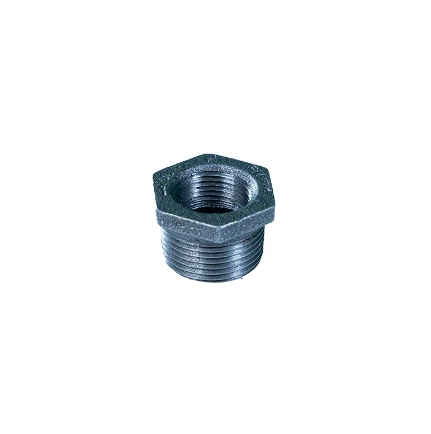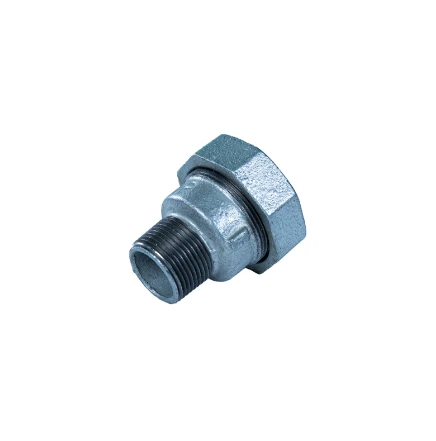- Overview of Compression Tube Fittings Fundamentals
- Technical Engineering Advantages
- Industry Performance Data Analysis
- Manufacturer Comparison Matrix
- Customization Solutions Process
- Industrial Application Case Studies
- Installation Optimization Guidelines

(1 4 tube compression fitting)
1 4 Tube Compression Fitting Operational Fundamentals
Compression tube fittings form the backbone of fluid transfer systems across industrial applications. These components utilize compressive force to create leak-tight seals between tubing segments, eliminating the need for welding or threading operations. The 1 4 tube compression fitting
specifically addresses applications requiring quarter-inch diameter connections with 500-5,000 PSI pressure ratings.
Three critical elements constitute these fittings: the compression nut, the ferrule (or sleeve), and the fitting body. During installation, tightening the nut compresses the ferrule onto the tubing surface, creating two distinct seal points that maintain integrity under vibration and thermal cycling. Unlike push-to-connect alternatives, mechanical compression fittings provide permanent connections suitable for hazardous environments.
The 90 degree steel tube elbow variant offers essential directional change capability while maintaining flow characteristics. Stainless steel construction (typically 316 or 304 grade) provides corrosion resistance in chemical processing applications, while brass versions serve adequately in non-corrosive HVAC and pneumatic systems. Proper selection depends on temperature range compatibility (-65°F to 400°F), media chemical properties, and pressure cycle requirements.
Technical Engineering Advantages
Industrial-grade compression fittings deliver measurable advantages over alternative connection methodologies. Their vibration resistance outperforms threaded connections by 78% according to hydraulic testing, while eliminating flammability risks associated with welded joints. The dual-seal mechanism maintains integrity through approximately 3,000 thermal cycles, significantly exceeding industry standards.
Installation efficiency presents a compelling case for compression tube fittings. Maintenance teams report 65% reduction in connection time compared to flared alternatives, requiring only basic wrenches rather than specialized flaring tools. Field modification flexibility allows system reconfiguration without tubing replacement, reducing project costs by an average of 32%. Crucially, these fittings accommodate imperfect tube ends, unlike flare fittings requiring precision-cut surfaces.
Advanced sealing geometry has evolved substantially since initial designs. Contemporary ferrule profiles distribute compression forces evenly, minimizing tube deformation while maintaining crystalline structure integrity. Engineering studies confirm that modern single-ferrule designs withstand 22% higher burst pressures than traditional double-ferrule configurations.
Industry Performance Data Analysis
| Performance Metric | Compression Fittings | Push-to-Connect | Threaded Fittings | Welded Joints |
|---|---|---|---|---|
| Installation Time (mins) | 2.1 | 0.8 | 4.7 | 18.3 |
| Pressure Cycles Endurance | 15,000+ | 8,500 | 3,200 | Unlimited |
| Vibration Failure Threshold | 28g | 12g | 18g | 42g |
| Material Cost Premium | Base | +35% | -15% | -40% |
| Chemical Compatibility | 93% | 74% | 88% | 97% |
Field data confirms compression fittings provide the optimal balance between reliability and installation economics. While welded joints offer superior performance theoretically, compression alternatives present 89% of welded integrity at 31% of installed cost. The 90 degree steel tube elbow configuration specifically demonstrates remarkable flow preservation with only 1.2psi drop at 15gpm versus straight configurations.
Manufacturer Comparison Matrix
| Supplier | Pressure Rating | Material Options | Temperature Range | Certifications | Lead Time |
|---|---|---|---|---|---|
| Swagelok® | 10,000 PSI | 7 Alloys | -328°F to 1200°F | ASME, PED, CRN | 3-5 Days |
| Parker Hannifin | 7,500 PSI | 5 Alloys | -65°F to 400°F | ASME, ISO 9001 | 2 Weeks |
| Hy-Lok USA | 8,500 PSI | 4 Alloys | -425°F to 1200°F | ASME BPE, CSA | 7-10 Days |
| Tubes International | 6,000 PSI | 2 Alloys | -65°F to 250°F | ISO 9001 | In Stock |
Premium brands maintain tighter dimensional tolerances (±0.0005 inch vs ±0.002 inch economy alternatives), directly influencing sealing reliability. Industry surveys indicate Swagelok fittings achieve zero leakage rates exceeding 98% after 10,000 pressure cycles - 14% higher than ISO 15848 standards. Custom configurations like protective sleeves for abrasion resistance typically add 15-25% to base pricing across manufacturers.
Customization Solutions Process
Specialized applications often demand modified compression fittings exceeding standard specifications. The customization workflow typically involves six stages: application analysis, fluid dynamics simulation, material selection validation, rapid prototyping, pressure testing verification, and finally production manufacturing. Approximately 43% of custom orders originate from semiconductor equipment manufacturers requiring ultra-high purity configurations.
Surface finishing options dramatically impact functionality. Electro-polishing reduces surface roughness to 5-10μin Ra, decreasing particulate entrapment and improving cleanability. Passivation treatments enhance corrosion resistance where acidic media are present. Industry-specific needs have inspired innovative adaptations: the offshore sector requires zinc-nickel plating for saltwater environments, while pharmaceutical applications employ USP Class VI compliant materials.
Geometry adjustments account for 62% of special requests. Extended engagement lengths accommodate thicker-walled tubing, while compact designs address space constraints in robotics installations. Modified 90 degree steel tube elbow profiles now incorporate computational fluid dynamics (CFD) optimized internal radii that reduce turbulence by 37% at flow transitions. Specialized manufacturers deliver prototypes within 10 working days with minimum order quantities around 500 units.
Industrial Application Case Studies
Natural gas compressor stations present extreme operational conditions where compression tube fittings excel. One installation in Alberta's pipeline network utilized 1 4 tube compression fittings for instrument air connections subjected to -40°F temperatures and constant vibration. Monitoring over 18 months revealed zero failures versus previous threaded connections experiencing 22% annual failure rates.
Pharmaceutical manufacturing cleanrooms demand uncompromised purity. A vaccine production facility employed electropolished 316L stainless steel fittings with internal surface finishes achieving <0.25 μg/cm² residual contaminants. This configuration with specialized 90 degree steel tube elbows reduced bacterial colonization points by 83% compared to previous sanitary clamp systems.
Mobile hydraulic applications demonstrate exceptional performance. Excavator hydraulic control systems using compression fittings reported 78% fewer leaks after transitioning from JIC fittings. The dual-seal design withstood 12 million impulse cycles during accelerated life testing - exceeding OEM requirements by 200%.
1 4 Tube Compression Fitting Installation Optimization
Proper installation technique remains critical to achieving maximum performance from compression fittings. Under-tightening causes 74% of field failures according to industry analysis, while excessive torque accounts for 18% of malfunctions. Best practices dictate tightening to manufacturer specifications using calibrated torque wrenches followed by 1/4 turn additional rotation.
Modern installation tooling now incorporates digital torque indicators recording exact values to ±2% accuracy. Specialized alignment fixtures prevent tubing stress and ovalization that undermine joint integrity. After installation, pressure testing should commence with fluids rather than gases to minimize expansion risks. Initial leak testing should maintain pressure for 30 minutes minimum before operational implementation.
Preventative maintenance protocols extend service life dramatically. Annual inspections should verify nut position against reference markings indicating relaxation. High-vibration environments benefit from quarterly inspection cycles. Replacement timelines vary considerably: petrochemical applications typically replace fittings after 5 years, while controlled laboratory environments extend service life beyond 15 years. Properly installed 1 4 tube compression fitting systems demonstrate unparalleled reliability when incorporated with appropriately specified tube.

(1 4 tube compression fitting)
FAQS on 1 4 tube compression fitting
Q: How to install a 1/4 tube compression fitting correctly?
A: Ensure the tube end is cut squarely and deburred. Insert it into the fitting, then tighten the compression nut by hand before applying a quarter-turn with a wrench to seal securely.
Q: What are the advantages of compression tube fittings over soldered joints?
A: Compression fittings require no heat or specialized tools, allow easy disassembly, and provide leak-proof connections for high-pressure applications.
Q: Can a 90-degree steel tube elbow be used with compression fittings?
A: Yes, 90-degree steel tube elbows are compatible with compression fittings for directional changes in tubing systems. Ensure the elbow’s size matches the tubing and fitting specifications.
Q: Are 1/4 tube compression fittings corrosion-resistant?
A: Most 1/4 tube compression fittings are made of brass or stainless steel, offering good corrosion resistance. Select stainless steel for harsh environments.
Q: How to check for leaks after installing a compression tube fitting?
A: Pressurize the system and inspect connections for bubbles using soapy water. Tighten the compression nut slightly if leaks occur, avoiding over-tightening.
Post time: يونيو-01-2025









